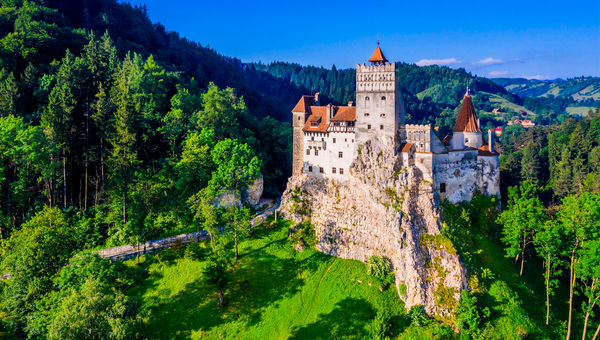Land tours and river cruises are thriving in Eastern Europe - Travel Weekly
Demand for travel to Eastern Europe is at its strongest in three years, according to tour operators and river cruise lines, some of whom say the region could see a full recovery in 2024.
To be sure, bookings have yet to surpass 2019 levels -- a year many companies say was the region's best, before the pandemic and Russia's war in Ukraine tanked sales. But the uptick in demand is fueling a long-awaited sense of optimism.
"Eastern Europe is enjoying a comeback, specifically river cruising on the Danube," said Avalon Waterways president Pamela Hoffee, adding that during Q2 of this year, Eastern Europe outpaced other destinations in sales.
Bookings are not back to prepandemic levels, although they easily bested 2022 sales, Hoffee said. But she is optimistic that will change next year.
"The booking trend we're witnessing is exciting and full of promise," she said. "We believe 2024 could be the year for a full rebound."
Kensington Tours said it is seeing exponential booking growth for itineraries in Poland, the Czech Republic and the Baltics compared with 2022.
"We are trending at 280% growth in Poland, 250% in the Baltics, 200% in Austria, 150% in Czech and 75% in Hungary," said Morgan McKenna, regional vice president of Europe for Kensington.
Much of the current demand for Eastern Europe is coming from first-time visitors to the region, a trend Kensington said is a positive sign that recovery is on the horizon.
"I would say the bulk are new to us, which is a good indication of a rebound," McKenna said. "We have a couple repeat direct clients and repeat agents."
River cruising is an especially popular way for first-time travelers to see Eastern Europe, with suppliers attributing the increase in Danube bookings to the convenience it offers: The river flows through 10 countries between Germany and Bulgaria, and itineraries include visits to many Eastern European capitals, including Budapest and Bratislava, as well as historic sites.
"The demand for cruises is coming from travelers that have not yet been to the region (or at least to most of the featured destinations visited during the cruise)," said Marcus Leskovar, executive vice president of Amadeus River Cruises, adding that bookings for its Lower Danube cruises to the Black Sea began picking up last fall.
Strong demand for the Danube prompted Viking to add a new itinerary this year, the 17-day Capitals of Eastern Europe cruise from Vienna to Bucharest.

"We have seen increasing interest among our guests in exploring the lesser-trafficked eastern portion of the river," said Richard Marnell, executive vice president of marketing for Viking. "In 2023, we will host 14% more guests in Eastern Europe than in 2019, and we are already seeing even stronger interest for 2024 departures in the region."
Meanwhile, land itineraries, especially pre- and post-cruise extensions, have been more popular with returning travelers to Eastern Europe.
Avalon is seeing "incredibly strong extension bookings" for guests who want to stay longer in the region following their river cruises, with Prague being particularly popular with guests on the Upper Danube and the Transylvania region of Romania for those on the Lower Danube.
Tauck said it's seeing up to a 70% pickup in Eastern Europe land bookings this year compared with 2022, depending on the itinerary. And Globus is currently at 70% of 2019 booking levels for its land itineraries in the region. "Early sales for 2024 Eastern Europe are looking good," said Steve Born, chief marketing officer for the Globus family of brands. "Tours to Croatia, Hungary and Czech Republic are well ahead of pace compared to this time last year."
Cooler and less crowded
Suppliers said bookings for Eastern Europe began picking up sometime in the fall of 2022, months after the start of the war in Ukraine when sales plummeted.
"Prepandemic, Eastern Europe was the fastest-growing destination, but with the Ukrainian war, the destination almost imploded," said Rudi Schreiner, president of AmaWaterways, who added that 2023 Danube demand "looks decent again" but that the line is not at capacity. "We still see some hesitation regarding booking Eastern Europe river cruises."
The refugee crisis triggered concerns last year, Avalon's Hoffee said, as thousands of fleeing Ukrainians initially made their way to Poland and Hungary when the war started.
But now, some suppliers and advisors say, the very concerns that kept travelers away from Eastern Europe are among the reasons they're visiting.
"We have seen a rise of interest given the proximity to the war and [travelers] wanting to see these countries, given the rich history," Kensington's McKenna said. The war, she added, "has shed light on travel to these countries as they are in the news a bit more."
Poland is among those places, with Krakow and Warsaw increasingly sought-after destinations on land tours and Danube cruise extensions.
Sophia Kulich, owner of Jewish heritage custom travel agency Sophia's Travel, said bookings for her Jewish heritage land trips in the Baltics, Prague and Budapest have already exceeded prepandemic levels and that clients are interested in the region's history as well as its affordability.
Eastern Europe is also generally less crowded than Western Europe, even during the peak summer season, suppliers said, which adds to its appeal. And as more travelers try to beat the heat, the region offers some cooler temperatures during the hottest months. But shoulder season bookings are also strong.
"As travel continues to come back across Europe, travelers will continue to look for ways to escape the crowds in Italy, England, Spain, Ireland and France and get off the beaten path," Hoffee said. "Eastern Europe -- with its cooler temperatures and cultural diversity -- provides that opportunity."
Comments
Post a Comment